#Cheeses
Explore tagged Tumblr posts
Note
Can you tell me some cheeses? I need to broaden my grilled cheese horizons
The following cheeses have been approved for use in grilled cheese sandwiches by the American Cheesiological Society:
Cheddar
Mozzarella
Colby
Monterey Jack
Pepper Jack
John Jacob Jingleheimer Jack
Camembert
Swiss
Gouda
The following cheeses are not recommended for use in grilled cheese sandwiches by the American Cheesiological Society:
Blue
Cottage
Cream
Feta
Limburger
Parmesan
Stilton
Sub-Stilton
Anti-Stilton
The following cheeses have been deemed critically dangerous for use in grilled cheese sandwiches by the American Cheesiological Society:
Casu Martzu
Terminus Brie
Muenster
Do not under any circumstances attempt to grill these cheeses, as doing so may result in death, mass hysteria, plague, war, the summoning of occult beasts, false-vacuum decay events, deicide, and/or muenstral cramps.
1K notes
·
View notes
Text
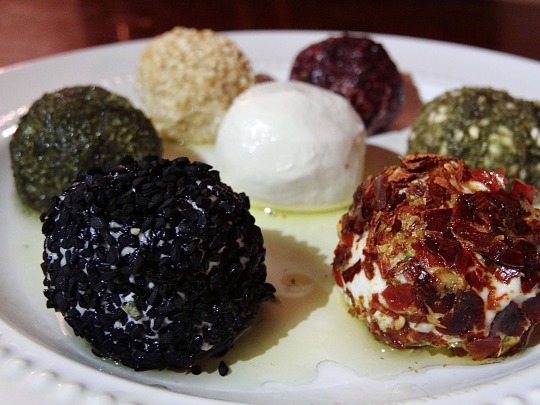
[ID: Seven yoghurt balls on a plate drizzled with olive oil. The one in the center is plain; the others are covered in mint, toasted sesame seeds, ground sumac, za'tar, crushed red chili pepper, and nigella seeds. End ID]
لبنة نباتية / Labna nabatia (Vegan labna)
Labna (with diacritics: "لَبْنَة"; in Levantine pronunciation sometimes "لَبَنَة" "labanay") is a Levantine cow's, sheep's, or goat's milk yoghurt that has been strained to remove the whey and leave the curd, giving it a taste and texture in between those of a thick, tart sour cream and a soft cheese. The removal of whey, in addition to increasing the yoghurt's tanginess and pungency, makes it easier to preserve: it will keep in burlap or cheesecloth for some time without refrigeration, and may be preserved for even longer by rolling it into balls and submerging the balls in olive oil. Labna stored in this way is called "لبنة كُرَات" ("labna kurāt") or "لبنة طابات" ("labna ṭābāt"), "labna balls." Labna may be spread on a plate, topped with olive oil and herbs, and eaten as a dip for breakfast or an appetizer; or spread on kmaj bread alongside herbs, olives, and dates to make sandwiches.
The word "labna" comes from the Arabic root ل ب ن (l b n), which derives from a Proto-West-Semitic term meaning "white," and produces words relating to milk, yoghurt, nursing, and chewing. The related term "لَبَن" ("laban"; also transliterated "leban") refers to milk in Standard Arabic, but in Levantine Arabic is more likely to refer to yoghurt; a speaker may specify "لَبَن رَائِب" (laban rā'ib), "curdled milk," to avoid confusion.
Labna is a much-beloved food in Palestine, with some people asserting that no Palestinian home is without a jar. Making labna tabat is, for many, a necessary preparation for the winter season. However, by the mid-2010s, the continuation of Israel's blockade of the Gaza strip, as well as Israeli military violence, had severely weakened Gaza's dairy industry to the point where almost no labna was being produced. Most of the 11 dairy processors active in Gaza in 2017 (down from 15 in 2016) only produced white cheese—though Mustafa Eid's company Khalij had recently expanded production to other forms of dairy that could be made locally with limited equipment, such as labna, yoghurt, and buttermilk.
Dairy farmers and processors pushed for this kind of innovation and self-sufficiency against deep economic disadvantage. With large swathes of Gaza's arable land rendered unusable by Israeli border policing and land mines, about 90% of farmers were forced by scarce pasture land and low fodder production to feed their herds with increasingly expensive fodder imported from Israel—dairy farmers surveyed in 2017 spent an estimated 87% of their income on fodder, which had doubled in price since 2007. Cattle were thus fed with low quantities of, or low-quality, fodder, resulting in lower milk production and lower-quality milk.
Most dairy processors were also unable to access or afford the equipment necessary to maintain, upgrade, or diversify their factories. Since 2007, Israel has tightly restricted entry into Gaza of items which they consider to have a "dual use": i.e., a potential civilian and military function. This includes medical equipment, construction materials, and agricultural equipment and machinery, and impacts everything from laboratory equipment to ensure safe food supplies to packaging and labelling equipment. Of the dairy products that Gazan farmers and processors do manage to produce, Israel's control over their export can cause huge financial losses—as when Israel prohibited the export of Palestinian dairy and meat to East Jerusalem without warning in March of 2020, costing estimated annual losses of 300 million USD.
In addition to this kind of economic manipulation, direct military violence threatens Gaza's dairy industry. Mamoun Dalloul says that his factory was accused of holding rockets and subsequently bombed in 2008, 2010, 2012, and again in 2014, resulting in repeated moves and the loss of the capability to produce yellow cheese. The Israeli military partially or totally destroyed 10 dairy processing factories, and killed almost 2,000 cows, during its 2014 invasion of Gaza, resulting in an estimated 43 million USD of damage to the dairy sector alone. Damage to cow-breeding farms in 2014 reduced the number of dairy cows to 2,600, just over half their previous number. Damage to, or destruction of, wells, water reservoirs, water tanks, and the Gaza Power Plant's fuel tank exacerbated pre-existing problems with producing cattle feed and with the transportation, processing, and refrigeration of dairy products, leading to spoiled milk that had to be disposed of. Repeated offensives made dairy processors reluctant to re-invest in equipment that could be destroyed at any time.
Israeli industry profits by making Gazan self-sufficiency untenable. Israeli goods entering Palestine are not subject to import taxes, and Israeli dairy companies are not dealing with the contaminated water, limited electricity, high costs of feed, out-of-date and expensive-to-repair equipment, and scarce land (some companies, such as Tnuva, purchase milk from farms on illegal settlements in the West Bank) with which Gazan producers must contend. The result is that the local market in Gaza is flooded with imports that are cheaper, more diverse, and of higher quality than anything that local producers can offer. Many consumers believe that Israeli products are safer to eat.
Nevertheless, Gazans continue building and rebuilding. Despite significant decreases in ice cream factories' production after the imposition of Israel's blockade in 2007, Abu Mohammad noted in 2015 that locally produced ice cream was cheaper and more varied than Israeli imports. In 2017, the amount of dairy sold in 74 shops in Gaza that was sourced locally, rather than from Israel, had increased from 10% to 60%. Ayadi Tayyiba, the region's first factory with an all-woman staff, opened in 2022; it produced cheese, yoghurt, and labna with sheep's milk from affiliated farms. However, demand for sheep's milk products has decreased in Gaza due to its higher production costs, leading the factory to supplement its supply with purchased cow's milk.
The current Israeli genocidal offensive on Gaza has caused damage of the same kind as—though to a greater extent than—previous shellings and invasions. Lack of ability to sell milk that had already been produced to factories, as well as lack of access to electricity, caused an estimated 35,000 liters of milk to spoil daily in October of 2023.
Support Palestinian resistance by calling Elbit System’s (Israel’s primary weapons manufacturer) landlord, donating to Palestine Legal's activist defense fund, and donating to Palestine Action’s bail fund.
Equipment:
A blender
A kettle or pot, to boil water
A cheesecloth or tea towel
Ingredients:
1 cup (130g) cashews (soaked, if your blender is not high-speed)
3/4 cup filtered or distilled water, boiled
1-3 vegetarian probiotic capsules (containing at least 10 billion cultures total)
A few pinches sea salt
More water, to boil
Arabic-language recipes for vegan labna use bulghur, almonds, or cashews as their base. This recipe uses cashew to achieve a smooth, creamy, non-crumbly texture, and a mild taste like that of cow's milk labna. You might try replacing half the cashews with blanched almonds for a flavor more similar to that of sheep's or goat's cheese.
Make sure your probiotic capsules contain no prebiotics, as they can interfere with the culture. The probiotic may be multi-strain, but should contain some of: Lactobacillus casei, Lactobacillus rhamnosus, Bifidobacterium bifidus, Lactobacillus acidophilus. The number of capsules you need will depend on how many cultures each capsule is guaranteed to contain.
Instead of probiotic capsules, you can use a speciality starter culture pack intended for use in culturing vegan dairy, many of which are available online. Note that starter cultures may be packaged with small amounts of powdered milk for the bacteria to feed on, and may not be truly vegan.
If you want a mustier, goat-ier taste to your labna, try replacing the water with rejuvelac made with wheat berries.
You can also start a culture by using any other product with active cultures, such as a spoonful of vegan cultured yoghurt. If you have a lot of cultured yoghurt, you can just skip to straining that directly (step 5) to make your labna—though you won't be able to control how tangy the labna is that way.
Instructions:
This recipe works by blending together cashews and water into a smooth, creamy spread, then culturing it into yoghurt, and then straining it (the way yoghurt is strained to make labna). It's possible that you could skip the straining step by adding more cashews, or less water, to the yoghurt to obtain a thicker texture, but I have not tested the recipe this way.
1. If your blender is not high-speed, you will need to soak your cashews to soften them. Soak in filtered or distilled water for 2-4 hours at room temperature, or overnight in the fridge. Rinse them off with just-boiled water.
2. Boil several cups of water and use the just-boiled water to rinse your blender, tamper, measuring cups, the bowl you will ferment your yoghurt in, and a wooden spoon or rubber spatula to stir. Your bowl and stirring implement should be in a non-reactive material such as wood, clay, glass, or silicone.
3. Make the yoghurt. Blend cashews with 3/4 cup just-boiled water for a couple of minutes until very smooth. Transfer to your bowl and allow to cool to about skin temperature (it should feel slightly warm if dabbed on the inside of your wrist). If the mixture is too hot, it may kill the bacteria.
4. Culture the yoghurt. Open the probiotic capsules and stir the powder into the cashew paste. Cover the bowl with a cheesecloth or tea towel. Ferment for 24 hours: on the countertop in summer, or in an oven with the light on in winter.
Taste the yoghurt with a clean implement (avoid double-dipping!). Continue fermenting for another 12-24 hours, depending on how tangy you want your labna to be. A skin forming on top of the yoghurt is no problem and can be mixed back in. Discard any yoghurt that grows mold of any kind.
5. Strain the yoghurt to make labna. Place a mesh strainer in a bowl, making sure there's enough room beneath the strainer for liquid to collect at the bottom of the bowl; line the strainer with cheesecloth or a tea towel, and scoop the cultured yoghurt in. Sprinkle salt over top of the yoghurt. Fold the towel or cheesecloth back over the yoghurt, and add a small weight, such as a ceramic plate or a can of beans, on top.
You can also tie the cheesecloth into a bag around a wooden spoon and place the wooden spoon across the rim of a pitcher or other tall container to collect the whey. The draining may occur less quickly without the weight, though.
Strain in the refrigerator for 24-48 hours, depending on the desired texture. I ended up draining about 2 Tbsp of whey.
6. If not making labna balls: Put in an airtight jar, and add just enough olive oil to cover the surface of the labna. Store in the fridge for up to two months.
7. To form balls (optional): Oil your hands to form the labna into small balls and place them on a baking sheet lined with parchment paper. They may still be quite soft.
Optionally sprinkle with, or roll in, dried mint, za'tar, sesame seeds, nigella seeds (ال��زحة), ground sumac, or crushed red chili pepper, as desired.
Optionally, for firmer balls, lightly cover with another layer of parchment paper and then a kitchen towel, and leave in the refrigerator to dry for about a day.
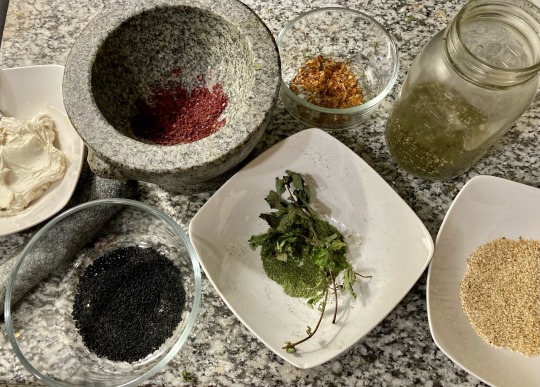
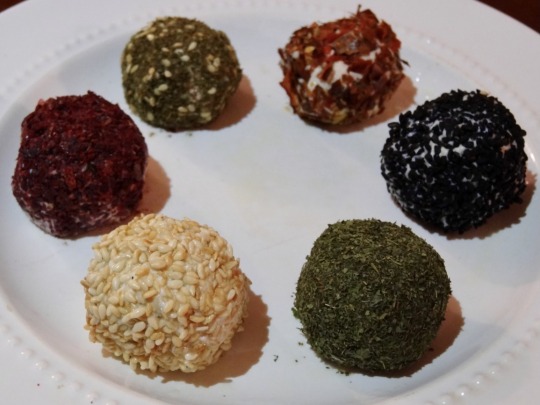
Place labna balls in a clean glass jar and add olive oil to cover. Retrieve labna from the jar with a clean implement. They will last in the fridge for about a year.
551 notes
·
View notes
Text




#jarcuterie#charcuterie#Individual Charcuterie#Mini Charcuterie Cups#New Years Eve#cheeses#fruits#Charcuterie Cups Ideas#Charcuterie Cup Ingredients#How to Make Mini Charcuterie Cups#More Charcuterie Cup Ideas#Charcuterie Cups#appetizers#holiday#food#foodie#Christmas dinner#Thanksgiving Dinner#food porn#foodgasm
31 notes
·
View notes
Text

#persona#champagne#charcuterie#meats#cheeses#cheese#martini#drinks#dining#expensive taste#luxury#fancy
57 notes
·
View notes
Text


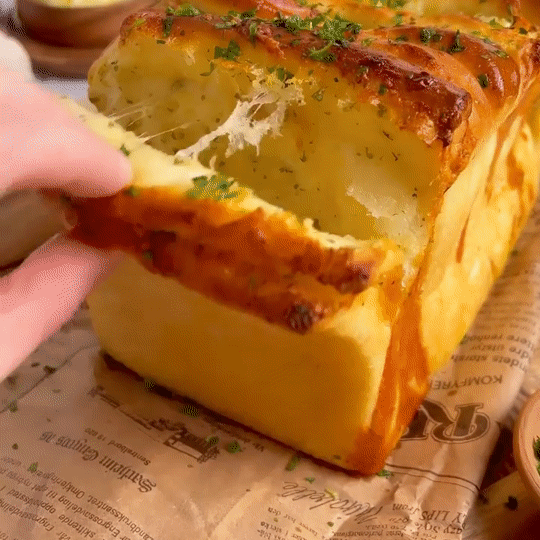
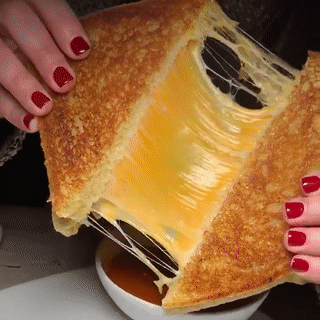



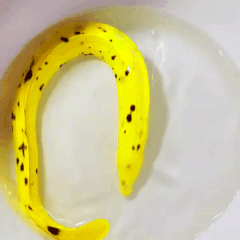

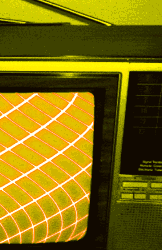
CHEESE SANDWICH - MY LITTLE PONY: FRIENDSHIP IS MAGIC THEMED STIMBOARD
with themes of cheese, toys, and lots of fun!
cw food
requested by no one
x | x | x x | x | x x | x | x
#cheese sandwich#yellow#yellow stims#smile#smiles#smile stims#glaggle#glaggle stim#cheese#cheeses#cheese stims#yellow stim#flower stim#flower#flowers#sunflower#sunflowers#paint#painting#paint stim#cheese stim#eel#eels#banana eels#ball stim#retro stim#yellow retro#retro yellow#grilled cheese#grilled cheese stim
33 notes
·
View notes
Text

36 notes
·
View notes
Text
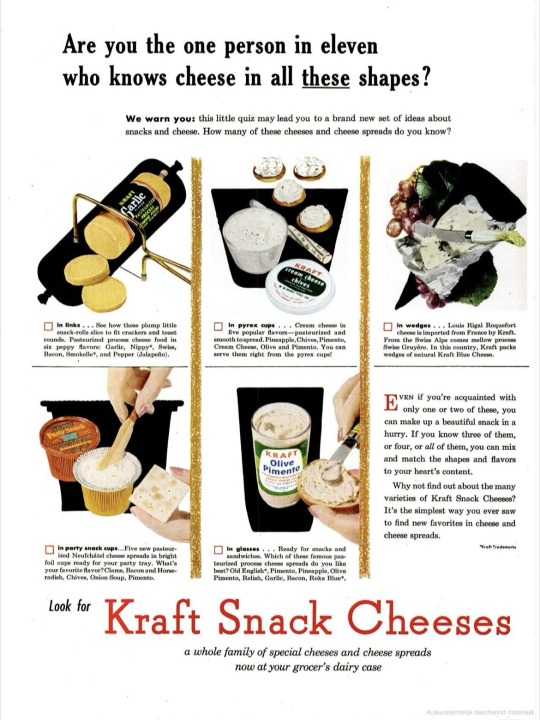
1958 Kraft Snack Cheeses
#1958#Kraft#snack#cheese#cheeses#spreads#processed foods#cerealkiller#vintage food#food#vintage advertising#vintage magazine#kitchen#magazine#1950s#50s#50s ads
45 notes
·
View notes
Photo

The Anatomy Of A Charcuterie Board - On Sutton Place
#charcuterie#charcuterie boards#entertaining#deli meats#food photography#cheeses#veggies#fruits#crackers
40 notes
·
View notes
Text
thought of the night:
i think i overthink my overthinking.
i literally started to wonder how many stages of thinking that is... the last overthinking is already a second stage of thinking, right? and then i think about the overthinking (the second stage) which makes it the third stage of thinking/second of overthinking... but then i realized in my head i said (trying very hard not to use the word think AGAIN) "i think i overthink my overthinking" which makes it the fourth stage of thinking and the third of overthinking and then i realized the absurdity of this tHoUgHt and wrote it down and...
#yes i could go on like this forever#that's what it's like in my head#cheeses#i need to sleep#why am i not asleep#thought of the day#thought of the night#overthinking#turtely
17 notes
·
View notes
Text

Spinach combined with feta, Swiss and Parmesan cheeses and baked between layers of phyllo dough. A treat that's worth the time it takes to prepare!
3 notes
·
View notes
Note
Gimmie some cheese variants plez :]
Alright •v•
Feta, cheddar, blue cheese, mozzarella, brie, cream cheese, gouda, camembert, cottage cheese, goat cheese Colby, hard cheese, soft cheese, processed cheese, grana padano, Asiago, ricotta, gruyere, burrito, emmental, fontina, parmesan, and montery jack
:]
3 notes
·
View notes
Text
To all those people who enjoy cooking.... if you cook with cheese, buy authentic cheeses because it'll make such a big difference in your food. I'm a really good cook with store bought cheeses, but I'm a really great cook with real cheeses. The difference in the flavor of your food is phenomenal. It's sooooooo worth it!!! 😊😍😋 Remember, you've got a friend in cheeses!!! 🧀🧀🧀😋😋😋😁
#cheeses#authentic cheeses#sooooooo flavorful#such a big difference#so worth it#be a great cook#your food is only as good as your ingredients#you've got a friend in cheeses#delicious#happiness#love#thank you#cooking#food
7 notes
·
View notes
Text

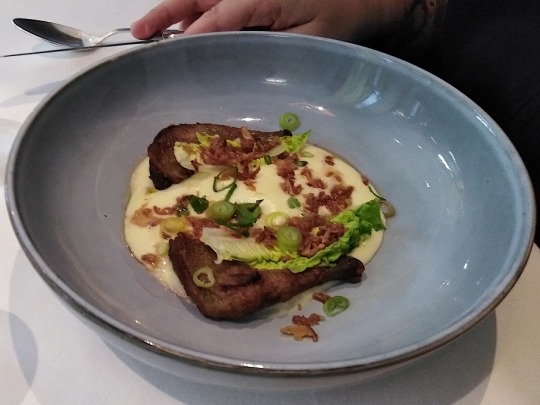
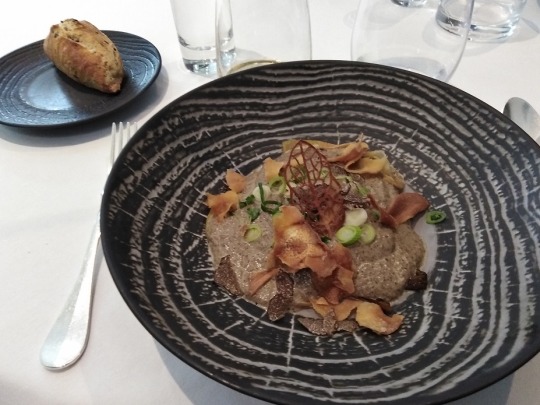
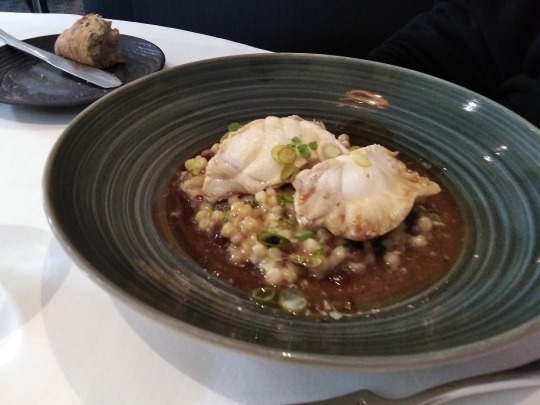
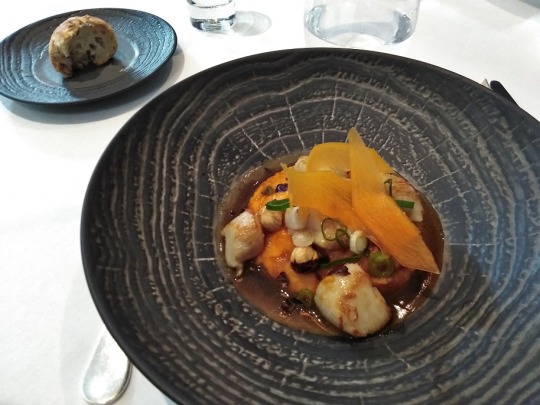

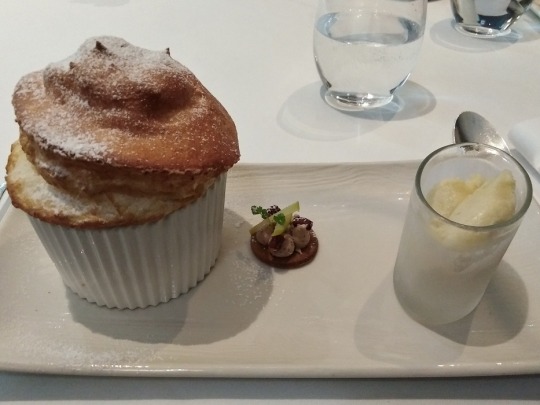
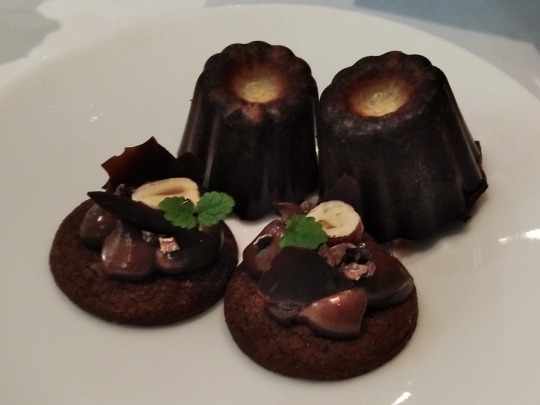
#déjeuner#lunch#restaurant gastronomique#gourmet restaurant#whisky#mise-en-bouche#cannelés#soufflé#cheeses#fromage#cheese#fromages#velouté#champignon#champignons#mushroom#mushrooms#ravioles#raviole#ravioli#raviolis#noix de Saint-Jacques#scallop#scallops#lotte#monkfish#angler fish#Fregola#Fregula#butternut
8 notes
·
View notes
Text
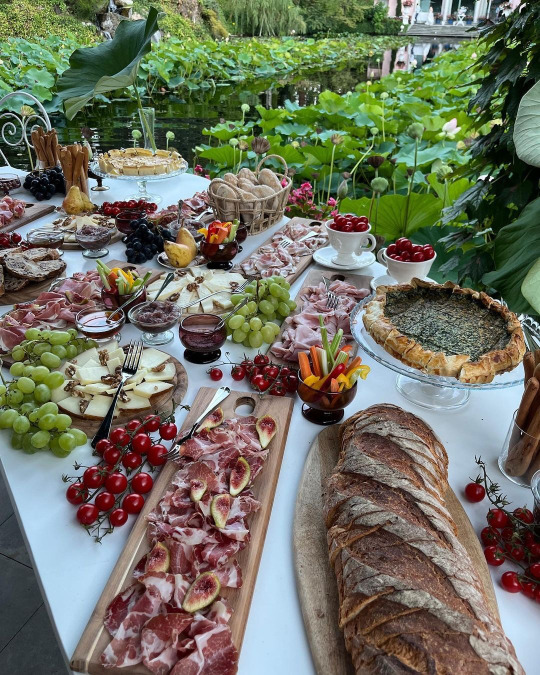
61 notes
·
View notes
Text

(All the other memes I’ve made..)
#memes#food#food memes#cheese#cheeses#cheesus#jesus#jesus christ#jesus loves you#what a friend we have in jesus#cheese fridge#grilled cheese#what would jesus do#cheesus christ#hymn#religion#religious art#christian#christian living#bing crosby#funny stuff#funny memes
6 notes
·
View notes